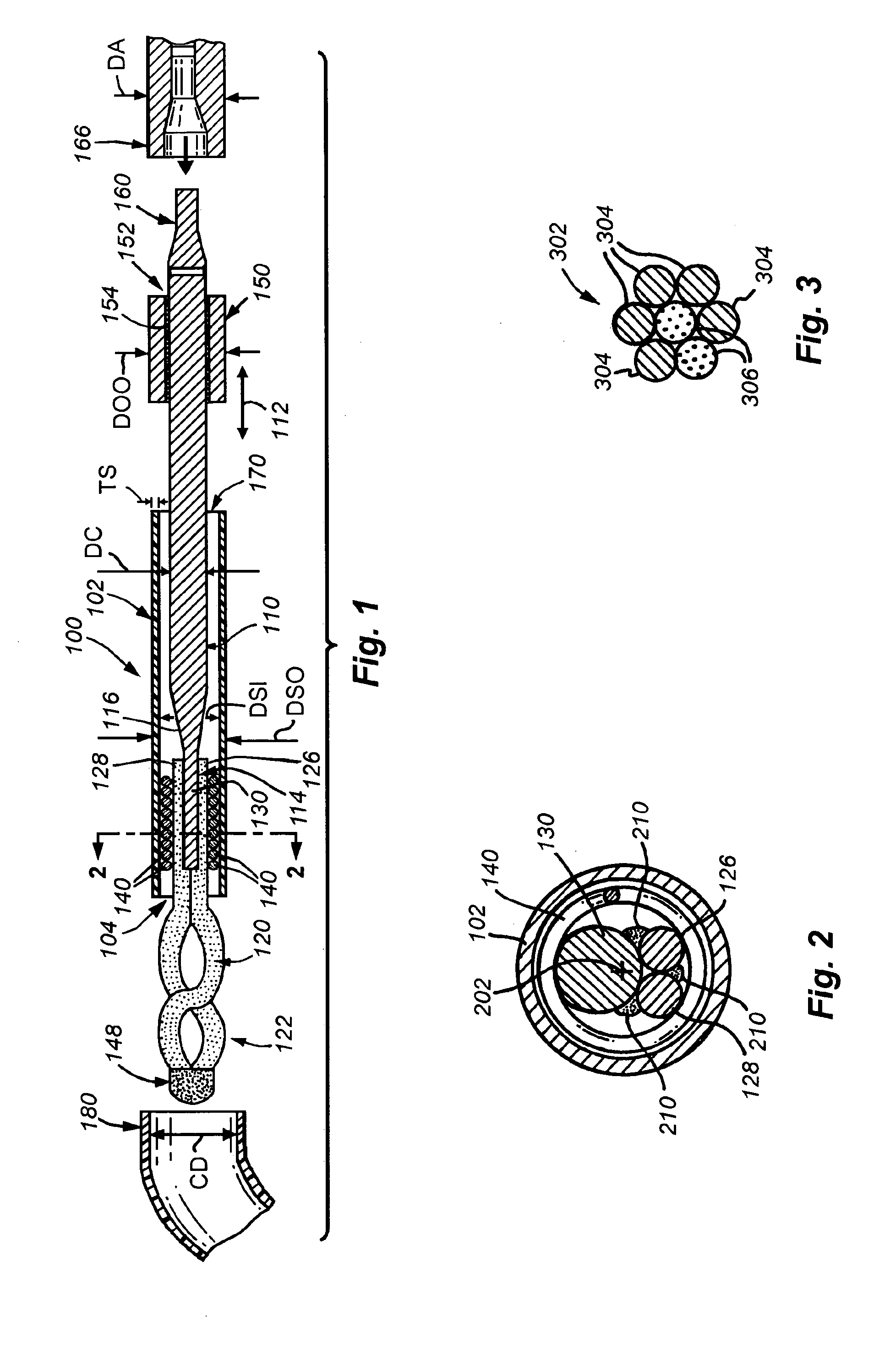Small-diameter snare
a small diameter, snare technology, applied in the field of surgical snares, can solve the problem of losing temporary access to the site within the patient, and achieve the effect of increasing the ability to ensnare and capture objects, reducing the diameter or cross section, and maximizing the support to the body portion
- Summary
- Abstract
- Description
- Claims
- Application Information
AI Technical Summary
Benefits of technology
Problems solved by technology
Method used
Image
Examples
Embodiment Construction
[0018]FIG. 1 shows a small diameter snare device 100 according to an embodiment of this invention. The device 100 includes of a hollow, elongate, thin-walled polymer outer sheath 102. The sheath 102 may include a radiopaque marker located at or adjacent to the open distal end 104 for visualization under fluoroscopy. The polymer can be any one of a number of acceptable biocompatible polymers with sufficient structural strength to support a thin-walled (approximately 0.0020 inch maximum wall thickness TS) structure without rupture or other failure under normal use conditions.
[0019] In one embodiment, the sheath is constructed from polyimide with a tungsten filler for radiopacity. The radiopaque filler may be added to the sheath polymer during processing, or a radiopaque material may be added to the outer surface via vapor deposition, plating, ion implantation processes, or the like. Alternatively, radiopaque markers can be applied at the distal end and / or other known locations along ...
PUM
 Login to View More
Login to View More Abstract
Description
Claims
Application Information
 Login to View More
Login to View More - R&D
- Intellectual Property
- Life Sciences
- Materials
- Tech Scout
- Unparalleled Data Quality
- Higher Quality Content
- 60% Fewer Hallucinations
Browse by: Latest US Patents, China's latest patents, Technical Efficacy Thesaurus, Application Domain, Technology Topic, Popular Technical Reports.
© 2025 PatSnap. All rights reserved.Legal|Privacy policy|Modern Slavery Act Transparency Statement|Sitemap|About US| Contact US: help@patsnap.com



